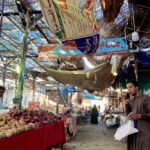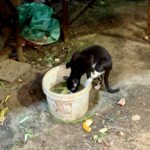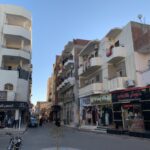What is there to see?
To make the best of the remaining days, we evaluated the options and looked at what else was there to do. Hurghada used to be a fishing village until, in the 1980s, substantial investments changed it into the scuba and snorkelling hotspot it is today. Consequently, there are no pyramids or other similarly impressive sites to visit. We considered travelling the 300km to Luxor by bus or taxi. Still, both options were strongly discouraged by the hotel staff. Not because it wouldn’t be safe, but for lack of comfort (bus) or too high prices (taxi). An 18-hour tour with other tourists back and forth in one day was not an option for us at all. Instead, we chilled at the pool and the beach and booked some wellness activities. Here we met some of the infamous loud and cringe-worthy kind of German tourists that, unfortunately, seem to be everywhere.
Visiting Hurghada's centre & markets
Despite Hurghada’s lack of historical sites, I insisted on leaving the hotel and looking around. Because how can I say I was in Egypt when all I saw was a fancy resort? Not having bothered to get a local SIM card for our phones, we didn’t use Uber and booked a taxi from the hotel to and from the centre of Hurghada. It was okay for us at 10 Euros each way, but ridiculously overpriced compared to local prices. Anyway, the driver brought us to a friend’s souvenir shop, and his son gave us a walking tour through the city.
The vegetable market reminded me of the ones I’ve seen in central Asia: huge, very orderly piles of veggies on tables, salesmen behind them, looking at us as strangers and discussing loudly among each other. The narrow alleys between the booths had dusty floors, and stray cats were looking for snacks and water.
A minute further was the animal market, where I decided not to take any pictures. The view of live chickens in small wired cages, meat uncooled and exposed to flies, let us cut that part of the trip short, and we opted out of visiting the fish market. However, it is crucial to not be judgemental at this point. Even though these sights were appalling, we should not forget that in the “developed” countries, animals often aren’t treated better; they’re simply out of our sight.
The rest of the walking tour led us through a small labyrinth of alleyways, many framed with piles of plastic rubbish. This was less surprising than seeing several pimped cars, showing off bold colours and enormous wheels, sitting only a few centimetres over the dusty ground. How on earth did they drive those over these uneven roads? Heaven knows…
Continue to What women want


















